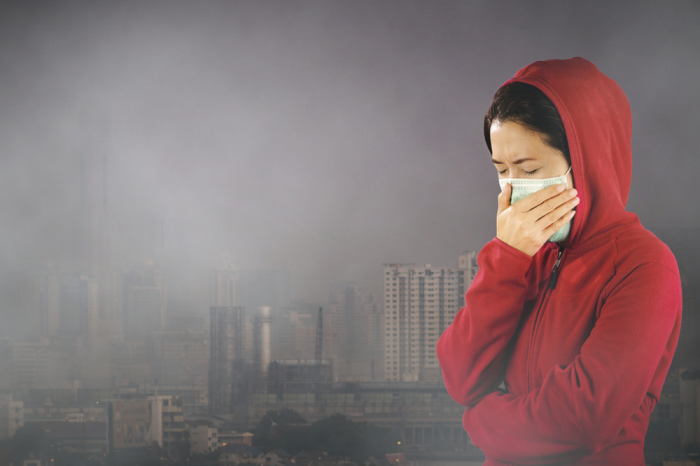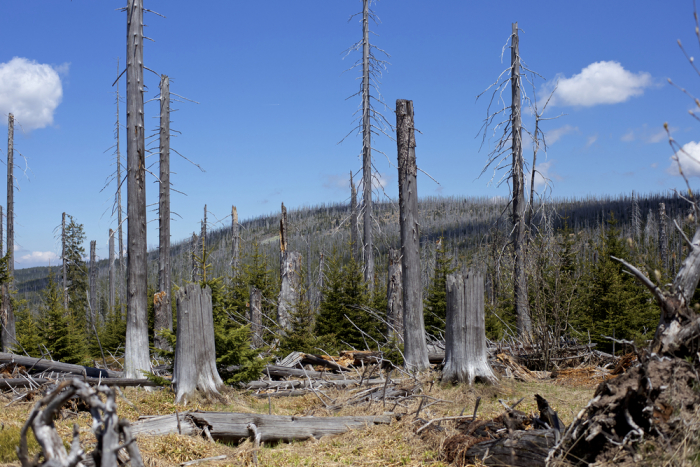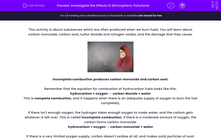This activity is about substances which are often produced when we burn fuels. You will learn about carbon monoxide, carbon soot, sulfur dioxide and nitrogen oxides, and the damage that they cause.

Incomplete combustion produces carbon monoxide and carbon soot:
Remember that the equation for combustion of hydrocarbon fuels looks like this:
hydrocarbon + oxygen → carbon dioxide + water
This is complete combustion, and it happens when there is an adequate supply of oxygen to burn the fuel completely.
If there isn't enough oxygen, the hydrogen takes enough oxygen to make water, and the carbon gets whatever is left over. This is called incomplete combustion. If there is a moderate amount of oxygen, the carbon forms carbon monoxide:
hydrocarbon + oxygen → carbon monoxide + water
If there is a very limited oxygen supply, carbon doesn't oxidise at all, and makes solid particles of soot:
hydrocarbon + oxygen → carbon soot + water
Both carbon monoxide and soot are bad for us. Soot particles get trapped in our lungs, making it hard for us to breathe. Soot also creates smog (smoky fog) and blackens buildings and plants. Carbon monoxide is even more toxic. If we breathe in carbon monoxide, it bonds with the haemoglobin in our red blood cells, preventing them from carrying oxygen round the body. This can make us short of breath, and even kill us. Because we cannot see or smell carbon monoxide, many buildings have machines to monitor carbon monoxide levels, and alert us if there is any carbon monoxide in the air.
We can prevent carbon soot and carbon monoxide in two main ways. The best is to make sure that they aren't produced in the first place - provided that fuels are burnt with a good, reliable oxygen supply, complete combustion will happen. Alternatively, we can use a catalytic converter (with a thin sheet of platinum as the catalyst) to convert carbon monoxide to carbon dioxide.
Burning impure fuels produces sulfur dioxide:
Chemically, hydrocarbon fuels contain hydrogen, carbon and nothing else. A lot of real fossil fuels (especially coal and oil) contain impurities, especially sulfur. If we burn a fuel containing sulfur, it will also react with oxygen:
sulfur + oxygen → sulfur dioxide
Sulfur dioxide causes breathing problems in humans. It also reacts with rainwater to make sulfuric acid - this is one of the components in acid rain. Acid rain damages plants and buildings, as can be seen in the picture of a forest below:

There are two ways to prevent the damage caused by sulfur dioxide. One is to burn fuels which don't contain sulfur impurities, or fuels that have been refined to remove the sulfur (e.g. clean coal). The other strategy is to capture the sulfur dioxide before it is released into the atmosphere. We can do this by burning coal with limestone (calcium carbonate) - this causes a reaction in the gases produced:
sulfur dioxide + calcium carbonate → calcium sulfite + carbon dioxide
Calcium sulfite is useful, because it can be used to make a building material called gypsum.
Burning fuels in air produces nitrogen monoxide and nitrogen dioxide:
In engines, we want fuel to react with oxygen from the air. Unfortunately, nitrogen in the air also reacts with oxygen at high temperatures:
oxygen + nitrogen → nitrogen monoxide + nitrogen dioxide
Nitrogen monoxide and nitrogen dioxide together are often called nitrogen oxides, or NOx.
Nitrogen oxides cause breathing difficulties and can make nitric acid when they react with rainwater.
It's not easy to prevent nitrogen oxides from being formed (though making engines less hot helps). To make sure that the nitrogen oxides don't reach the air, we can pass them through a platinum catalytic converter, which will convert them back into nitrogen and oxygen.
So, in this activity, you have learned about four pollutants. For each one, you know how they form, why they are a problem and how we can solve the problem. You might find it useful to convert that information into a table. The important message is that although all of these pollutants have been big problems in the past, people have found ways to solve many of these problems. That's good news!
Now it's time for some questions.








